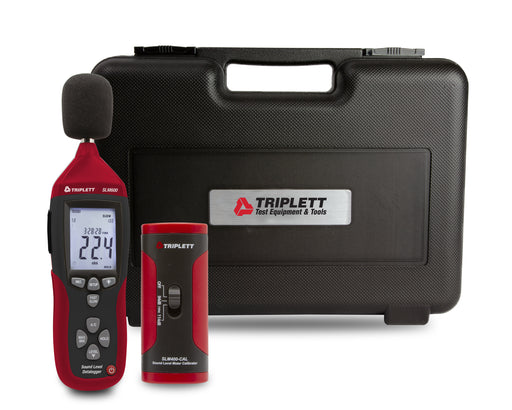Know More About Triplett Temperature and Humidity Data Loggers
What is a USB temperature data logger?
As mentioned, data loggers with the help of USB can be connected to a computer to feed or retrieve temperature and humidity readings of various industrial systems or devices. They sense the temperature and humidity in the environment or an industrial system and store it in the memory. You can simply connect it to the USB port of a computer, tablet, or any other suitable device. These devices have simple push buttons and a user-friendly menu which make them easy to operate. These compact devices are battery powered and can store thousands of such records. Most models offer multiple units such as Fahrenheit, Celsius, and so on for temperature measurements. GPP or grain per pound or grain per kg for humidity measurements.
Benefits of Using Temperature and Humidity Data Loggerss
Here are some benefits of using humidity and temperature recorders.
- These devices help ensure the required temperature and humidity levels are maintained as required.
- Testing these parameters is essential from the point of view of complying with industry standards and FDA, USDA regulations, especially in food, pharmaceuticals, healthcare, and other related industries.
- Since it can store and retrieve huge amounts of data, you can analyze various trends, patterns, permutations, and combinations.
- We offer some of the best temperature and humidity data loggers that offer accurate temperature and humidity measurements as well as precise tracking with the help of software and high-quality sensors.
- Using data loggers also ensures quality control especially crucial in food and healthcare sectors whether in storage, transportation, or shipping.
- Well controlled temperature and humidity parameters help improve energy efficiency in manufacturing systems, HVAC systems, and more.
- Some of these models are capable of remote access and monitoring through software in your smartphone.
How Temperature and Humidity Data Loggers Work
Our temperature and humidity data loggers are USB based and can be connected to a USB port for data feeding or retrieval. You need to simply connect it to your computer port which is connected to the manufacturing system. They come with sensors to sense any changes in humidity or temperature values and memory to store the collected data. The data logger converts the analog signals from the sensors into digital data using an analog-to-digital converter (ADC), and the digital signals are stored in its memory. Depending on the capacity and configuration, you can store several thousands of records and use them for analysis.
Applications of Temperature and Humidity Data Loggers
Here are some application areas of USB temperature data logger, humidity data loggers
- Food and beverage: Temperature and humidity monitoring is performed during the storage and transportation of food items to ensure quality and safety, and this can be efficiently achieved by data loggers.
- Pharmaceuticals: Medicines, specimens, and so on, must be stored at the right temperature and in humidity controlled environments. This can be achieved using data loggers.
- Scientific research: Maintaining and monitoring the required temperature is crucial in any research lab, and this can be easily achieved using data loggers.
- Cold storage chains: Data loggers are effectively used in supply chain and logistics to monitor temperature and humidity levels during storage and transportation which prevents them from perishing.
- Heating, ventilation, and air conditioning (HVAC) systems: Temperature and humidity data loggers are used to optimize energy efficiency and indoor climate control.
Choosing the Right Temperature and Humidity Data Logger
Here are some factors to consider when choosing a temperature and humidity data logger for your application.
- First, you must analyze your application requirements in terms of accuracy, measurement range, and so on and weigh all these parameters against the data logger features and capabilities. This will help you find the right model.
- Ensure the data logger is scalable and that it can be easily programmed for a new range of temperature and humidity levels in a given application. Also, for this same reason, check if the device can be recalibrated.
- The data logger must be designed to be robust and durable to withstand harsh industrial environments.
- Check if the data loggers can issue an alarm when the settings go off the track.
- Check for the data logger software version and its features as well as the compatibility with your system. Its software must support your data analysis requirements. Also, check the compatibility in terms of USB port types.



